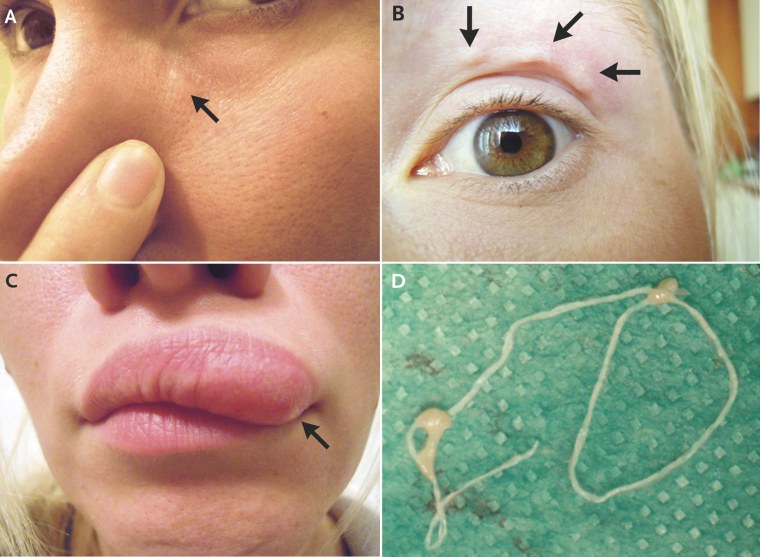A woman mystified by itchy, moving lumps on her face got a surprising and somewhat horrifying diagnosis: they were made by a worm.
The 32-year-old woman likely caught the worm, a type of nematode, when she was bitten by mosquitoes in a rural area outside Moscow, her doctor said.
“She had first noted a nodule below her left eye. Five days later, it had moved to above her left eye, and 10 days after that to the upper lip,” Dr. Vladimir Kartashev of Rostov State Medical University in Russia wrote in a letter to the New England Journal of Medicine.
“She documented these changes by taking photographs of her face (i.e., ‘selfies’),” added Kartashev, who wrote in to describe the case along with parasitologist Fernando Simon of the University of Salamanca in Spain.
“The nodules occasionally caused a localized itching and burning sensation, but otherwise she had no symptoms.”
Doctors pulled the worm out and identified it as Dirofilaria repens, a type of nematode that usually affects animals such as dogs and cats. But mosquitoes can pick it up and carry it to people on occasion.
The parasite, a cousin of heartworm, is found in Europe, Africa and Asia and can grow to as long as six inches. It's usually harmless, although it can cause an allergic reaction in animals.
Usually, the physical damage is minimal and pulling the worm out does the trick. But patients can sometimes have severe reactions. A German tourist developed a severe brain inflammation called meningoencephalitis after he caught the same species of parasite in India or Sri Lanka, according to a 2009 report.
The patient in Russia fared better. “After removal of the worm, the patient had a full recovery,” Kartashev and Simon wrote.

